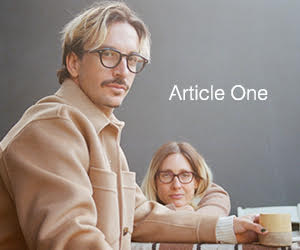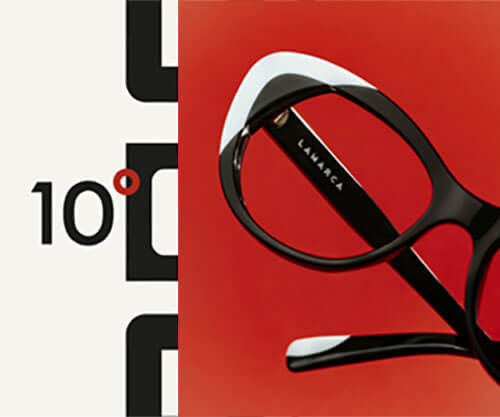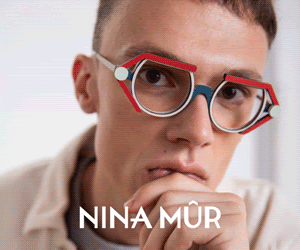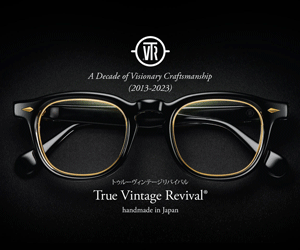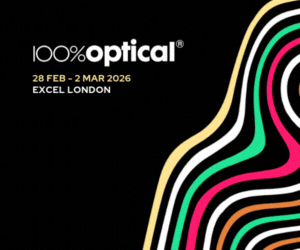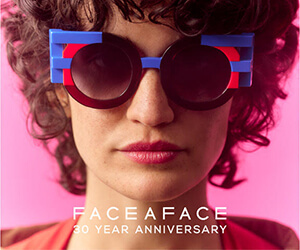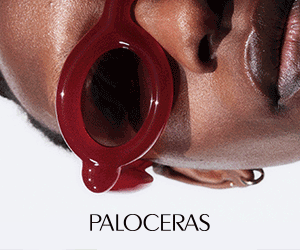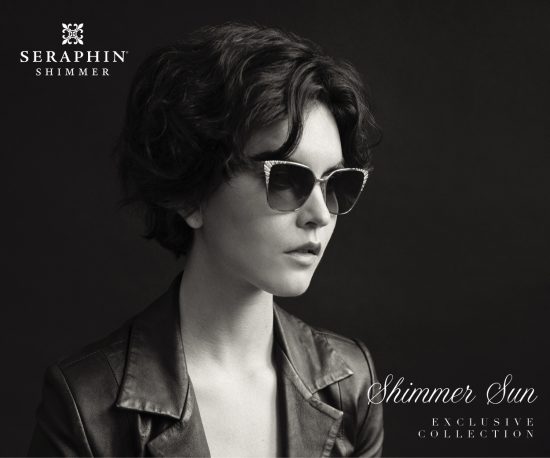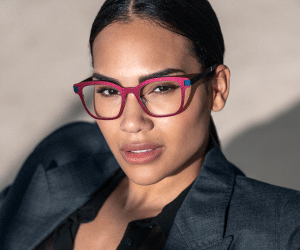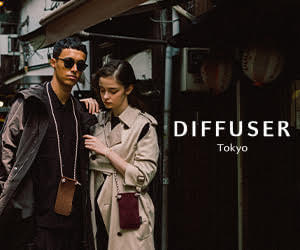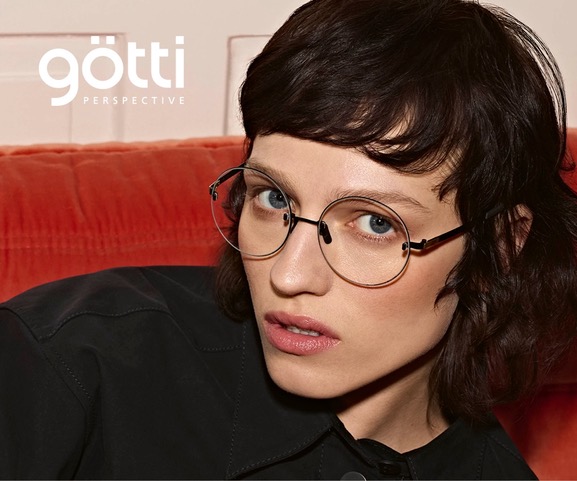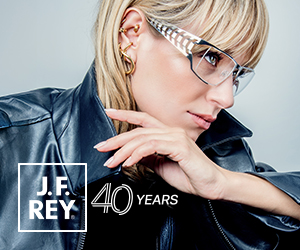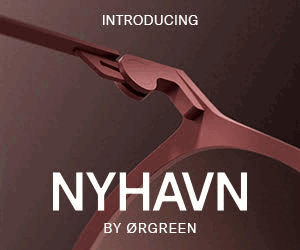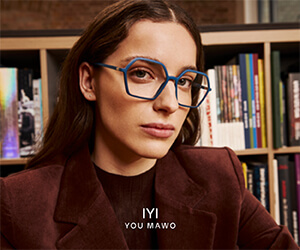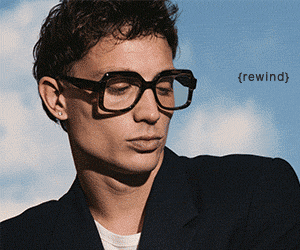Known particularly for her work on the Lamarca collections (from Tris Ottica), Laura Rattaro is a freelance eyewear designer with a wealth of experience in the optical business. She is fascinated by the connection between and perfect balance of shape and colour with special focus on ‘visual comfort’. We asked her to tell us about her career and her passion for eyewear design.
Laura, you have been working in the optical business for some time. Please tell us about your experience and how you started. I was born in Genoa into a family of opticians and optometrists, surrounded by glasses, lenses and pioneering ideas about progressive lenses from childhood. Spending time in the family shop and then studying optics gave me a wealth of knowledge that proved fundamental to my design work. I had a clear idea of my future right from the start: design was my primary interest and, having been born into the world of eyewear, I decided to specialise in this field. It is an interesting world in which design really means improving people’s lives and their visual well-being.
After participating in an internship in “frame design and prototyping” at the Centre Création Essilor in Paris, I officially started my career with small clients in Italy and then, a few years later, joined the big Rodenstock family in Munich as an external collaborator, but on an exclusive basis. I have been involved with the CERRUTI1881 collection since its inception.
It was my only experience working in a large company; after that, I focused on small and medium-sized companies with independent brands. I would mention VAVA eyewear, until 2021, which was one of the most interesting and stimulating projects of my career. I currently work as a designer for Lamarca Eyewear, a brand owned by Tris Ottica, for Emblema Eyewear by Aurigane, a company that invented prescription glasses for motorcyclists, offering unprecedented comfort under a helmet, and I am creative director for the Gambini1970 and Dandy’s brands owned by FaoFlex, all Italian companies. Above: Laura Rattaro, eyewear designer

You have a particular love for working in acetate. What is the draw for you of this classic material? Its beauty. No other material has a similar aesthetic appeal. The craftsmanship involved in part of the production process creates three-dimensional textures and gives it unrivalled depth. What’s more, its natural origin gives it a unique charm. I consider acetate to be a living material, like wood. I worked with it for years in my prototyping workshop and have retained its tactile memory in my mind. Fantastic. And then there’s the colour! Its different textures, transparent, translucent and solid. It’s inspiring.
How do you see the relationship between shape and colour in a frame, and what else do you perceive to be fundamental to the quality of a frame, other than the fine quality of the materials? Shape and colour are absolutely linked. There are shapes that can only be coloured in certain ways and, conversely, there are colours that are suitable for some shapes and not others. Colour is a language that is just as important as form.
Quality is a combination of factors that go beyond materials. Design quality is fundamental: good design requires attention to facial ergonomics, comfort, weight distribution, correct curvature, it’s complex.
Among the collections you are designing in 2025 is Lamarca and the elegant series – MOSAICO and FUSIONI. Could you tell us about the inspiration for these two lines and what gives both such a unique aesthetic and identity? Mosaico is a Lamarca family that speaks of colour. In 2025, this will express lightness, bright but not “loud” colours, original but not exaggerated shapes (visual comfort first and foremost) and reduced volumes, thin circles.
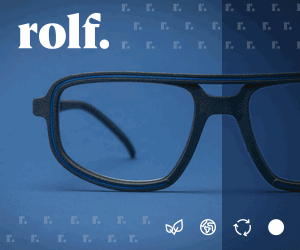

Macro trends should be observed carefully, as they tell us about the future through general aspects of people’s lives and, more generally, are influenced by what is happening in the world. We have terrible wars close to us that influence people’s thoughts, their perception of reality, their desires, their vision of the future… all of which can determine the direction of design, especially the colour of products.
How has technology changed the way you work in the last years, and are you inspired by the ever changing possibilities for innovation that new technologies bring to design? Technology = speed. For everything else, human sensitivity, imagination and craftsmanship still matter: those who have never worked with their hands will find it difficult to make the most of technology, from 3D printing to AI, without distinction.
What’s your next project for 2026? I would like to travel beyond the borders of Europe. There are new inspirations out there, colours and cultures for me to explore. As far as collections are concerned, 2026 is already history for me. I look forward to 2027 with positivity and the enthusiasm needed to always do the best I can.
For more information about Laura Rattaro please visit https://laurarattaro.com/



